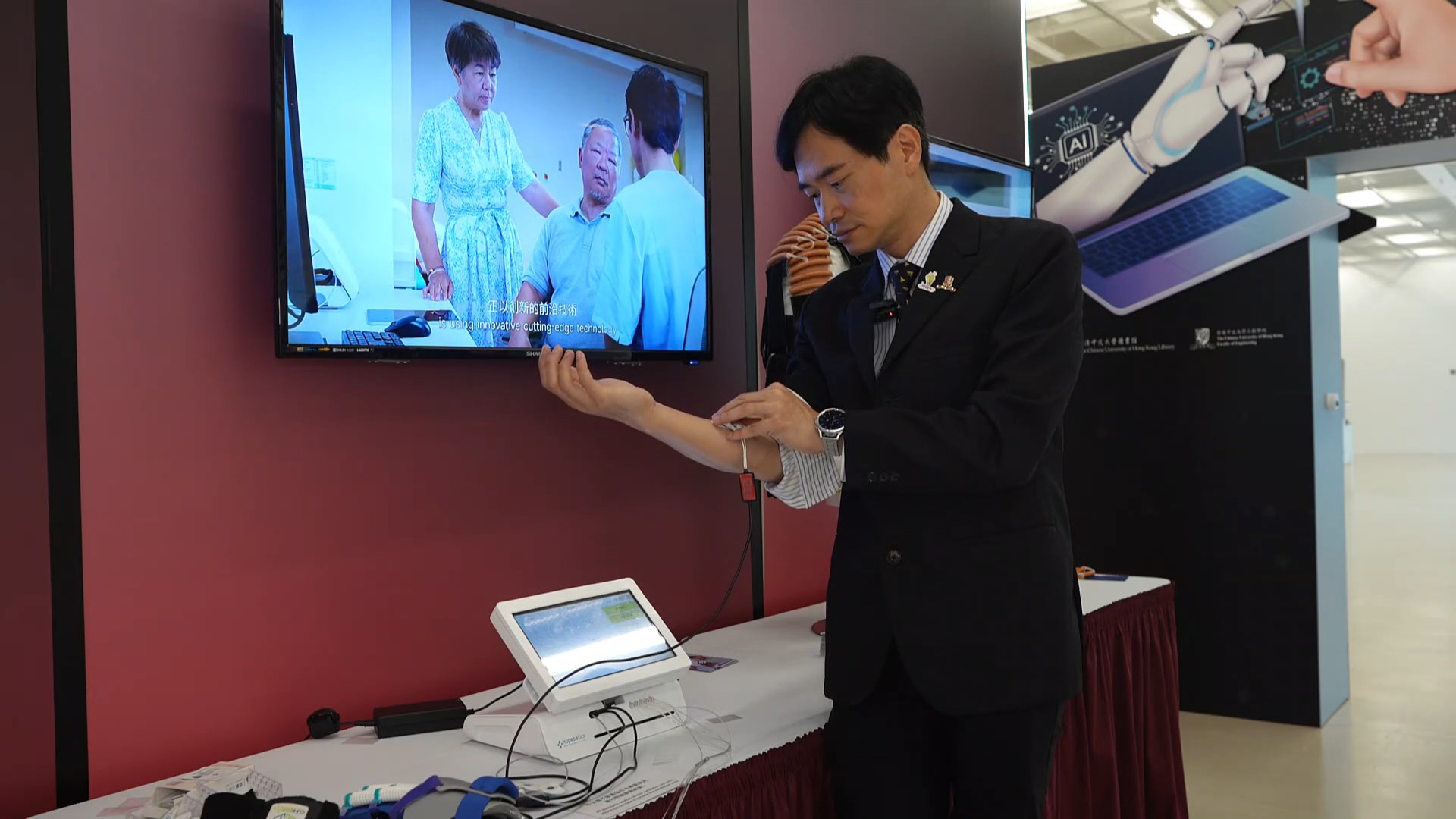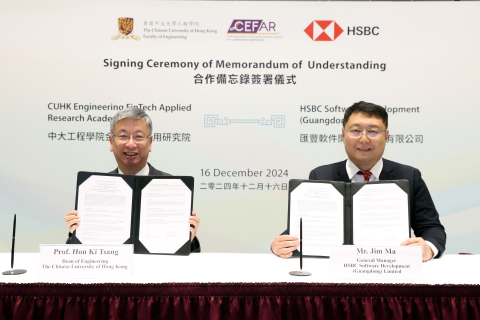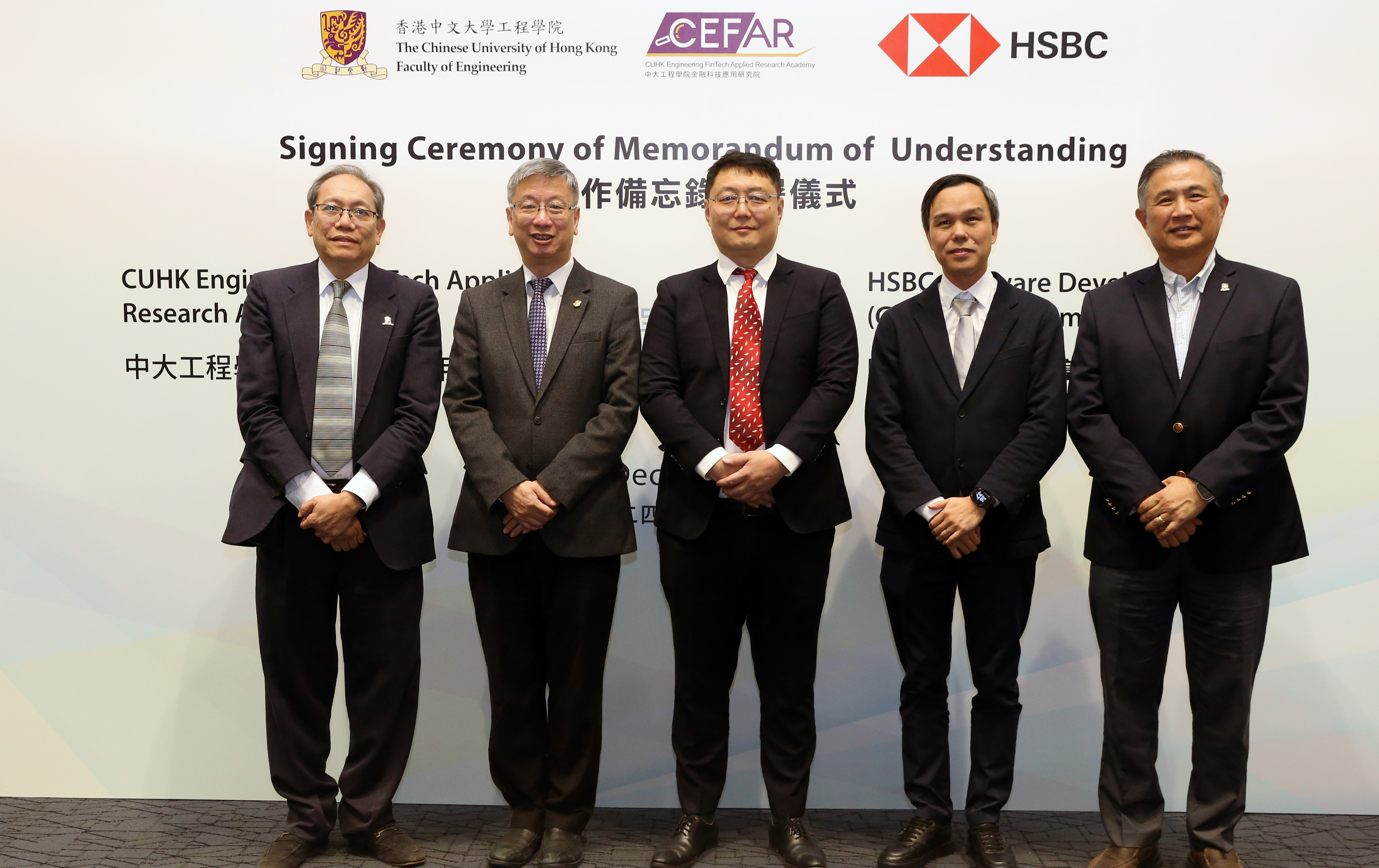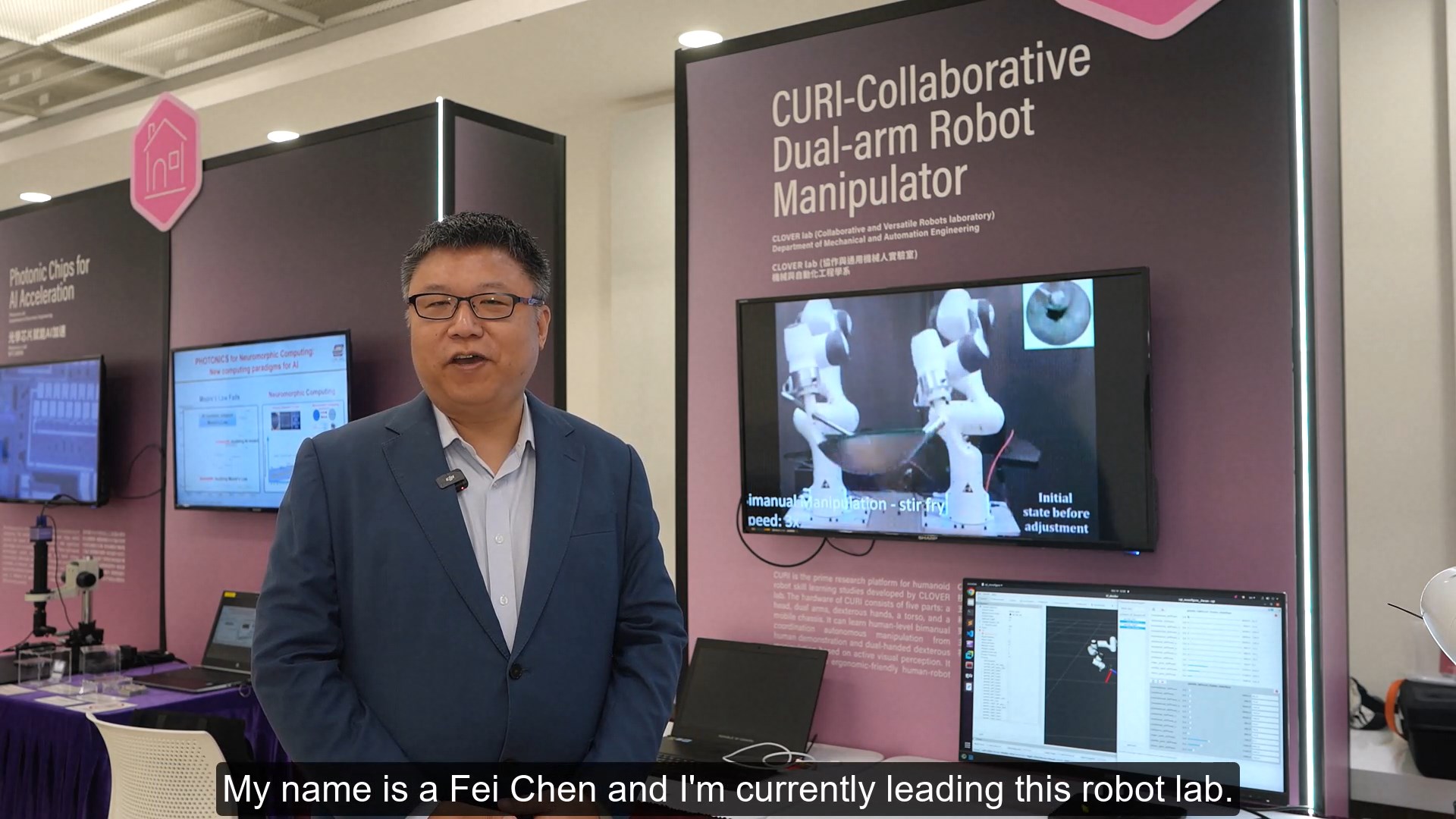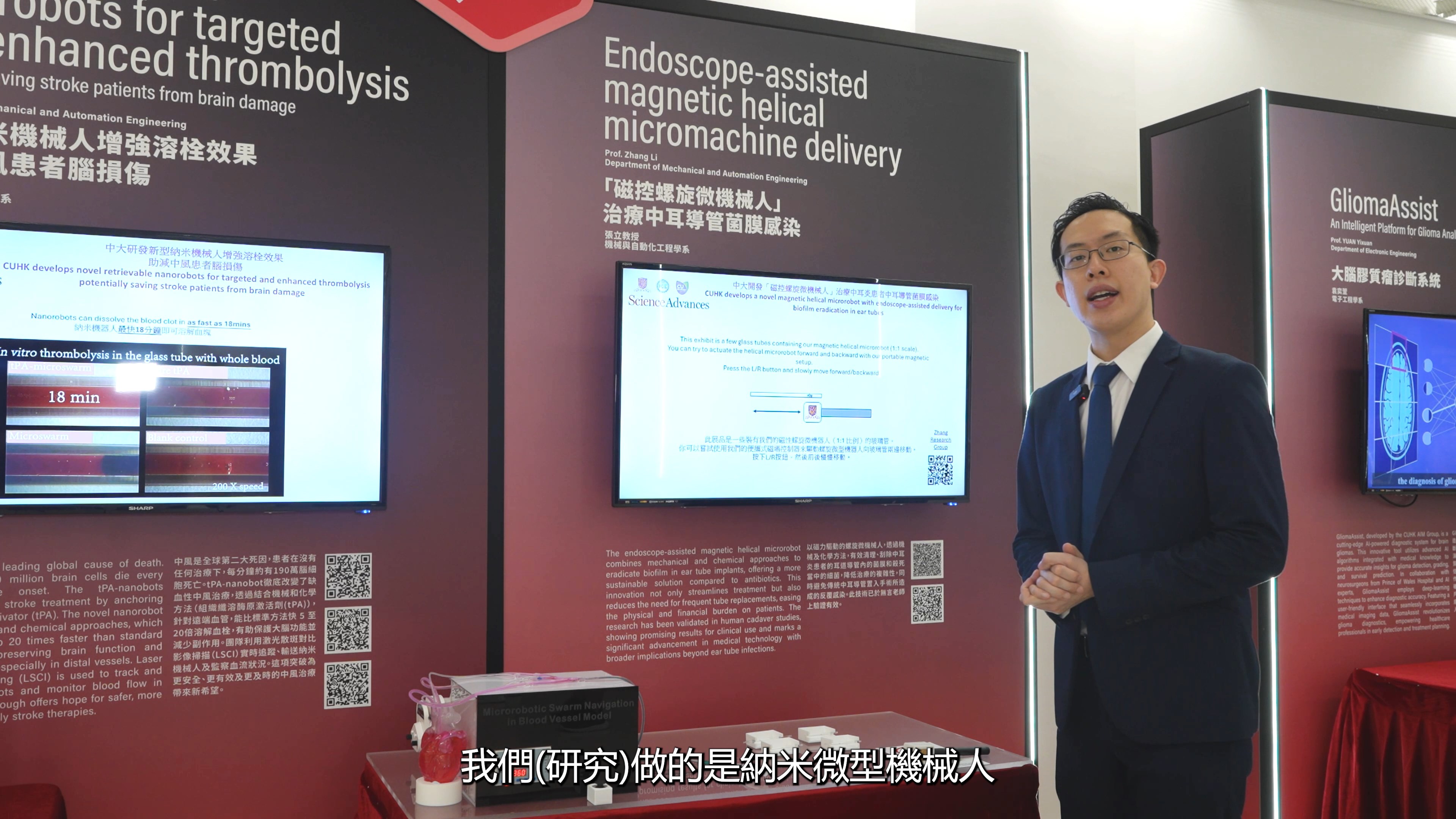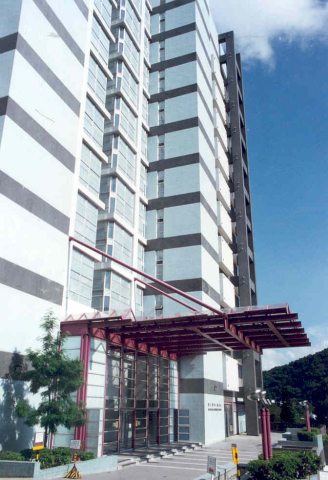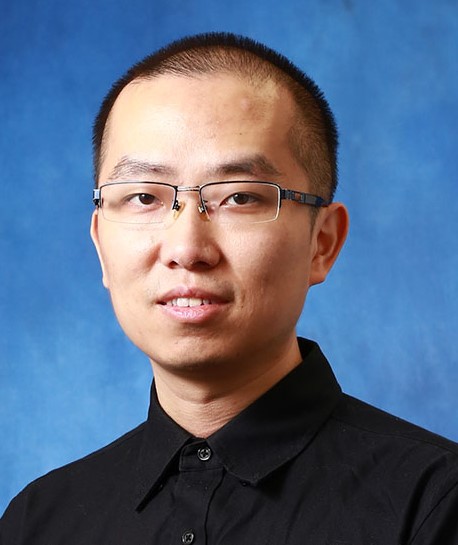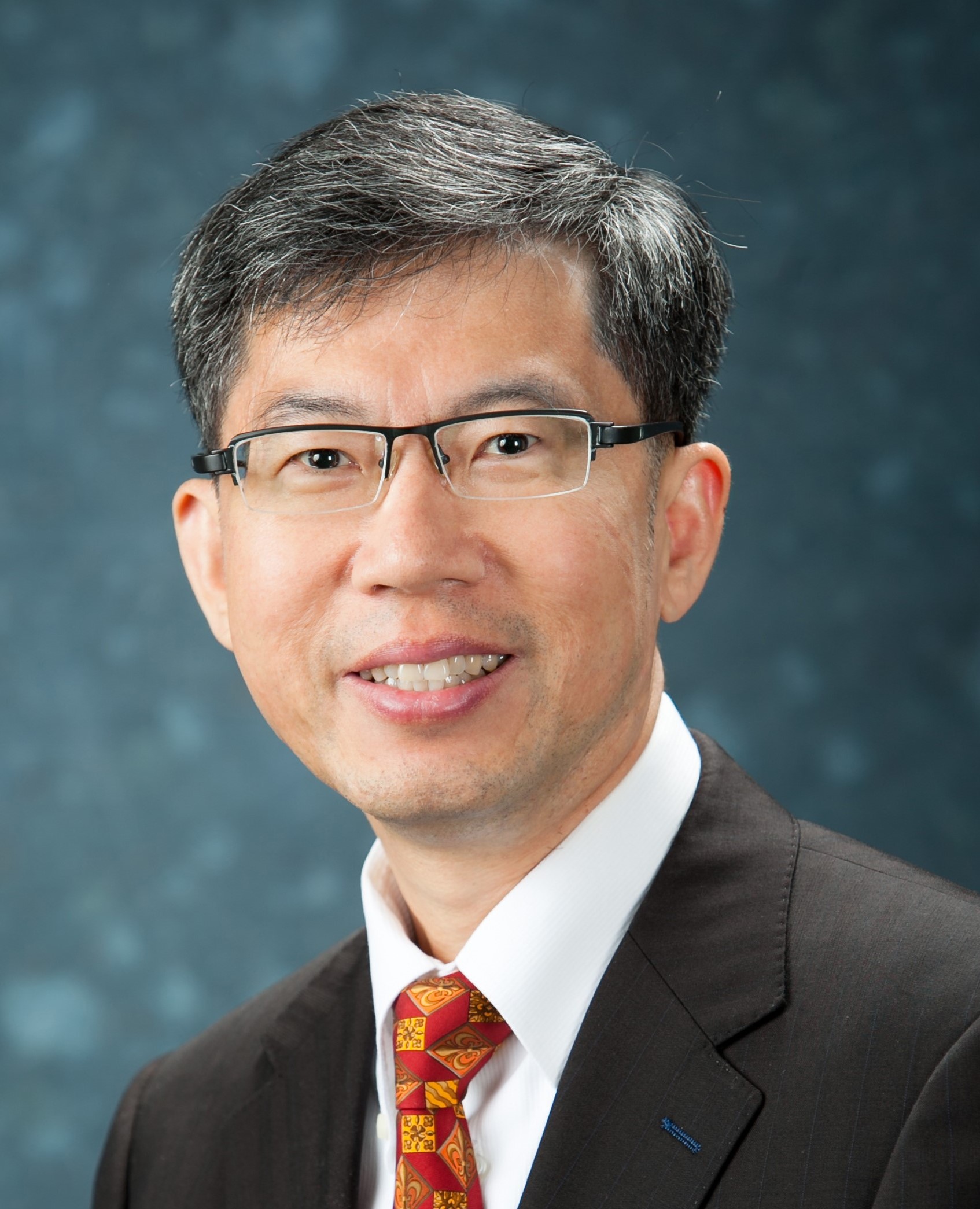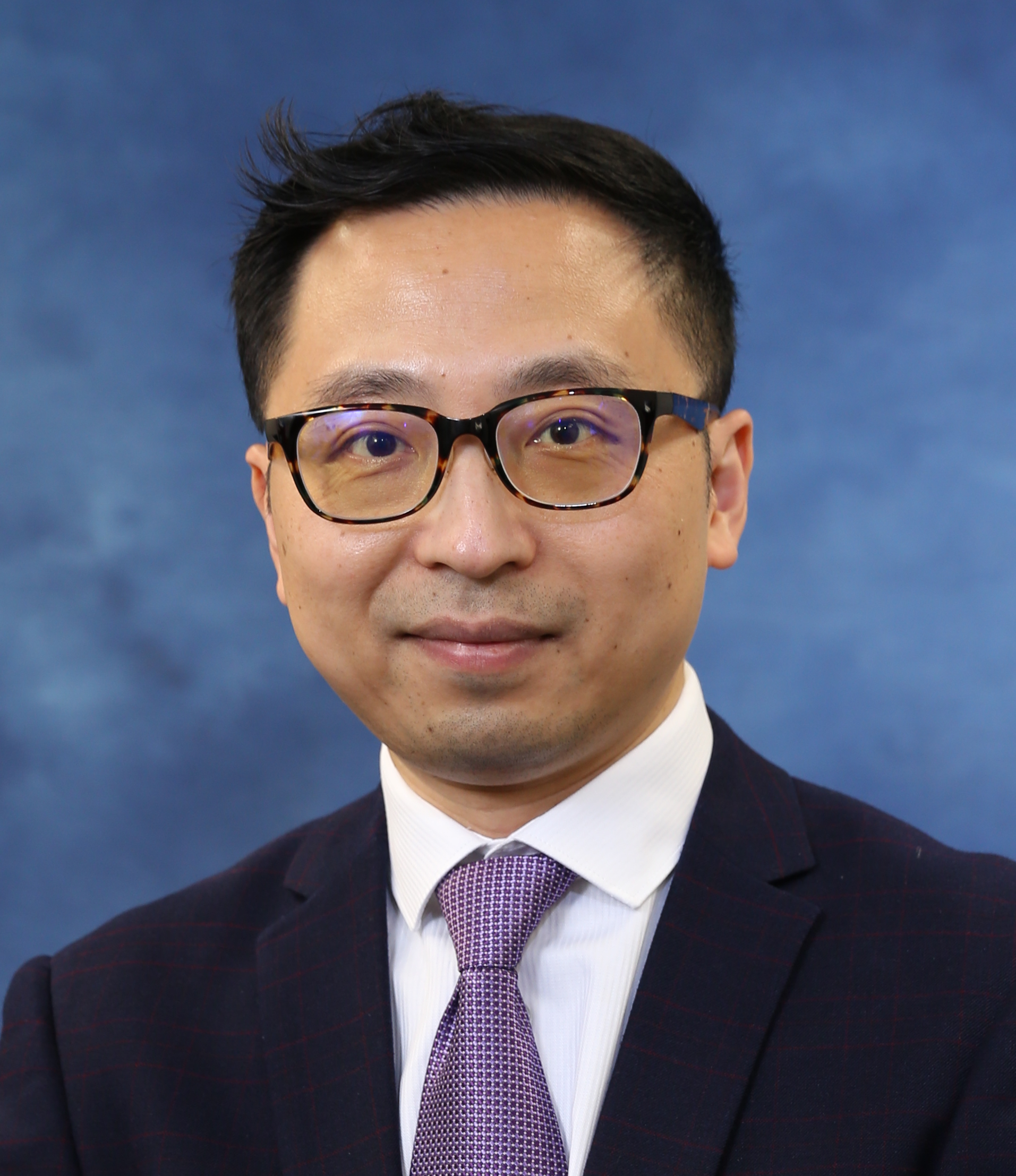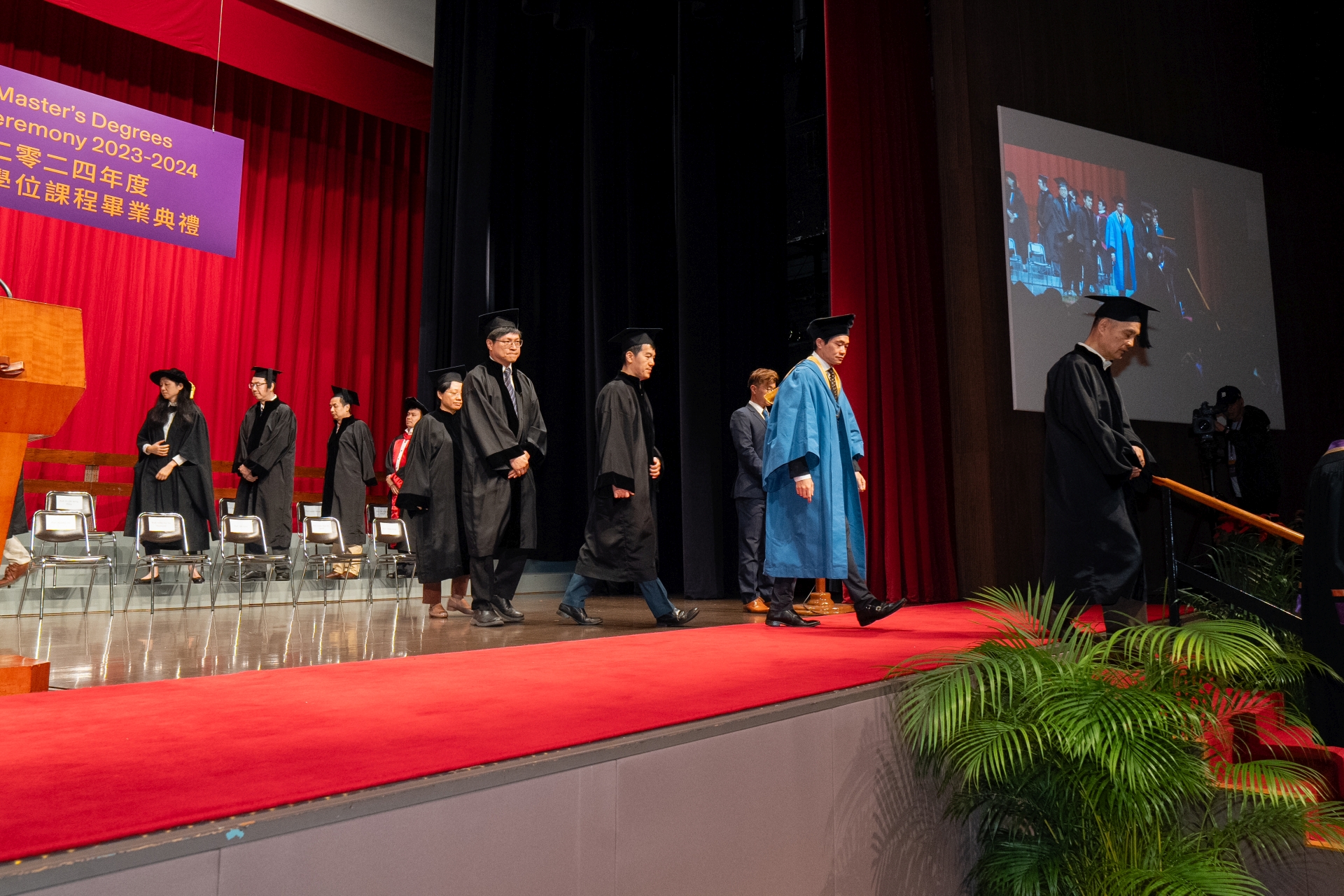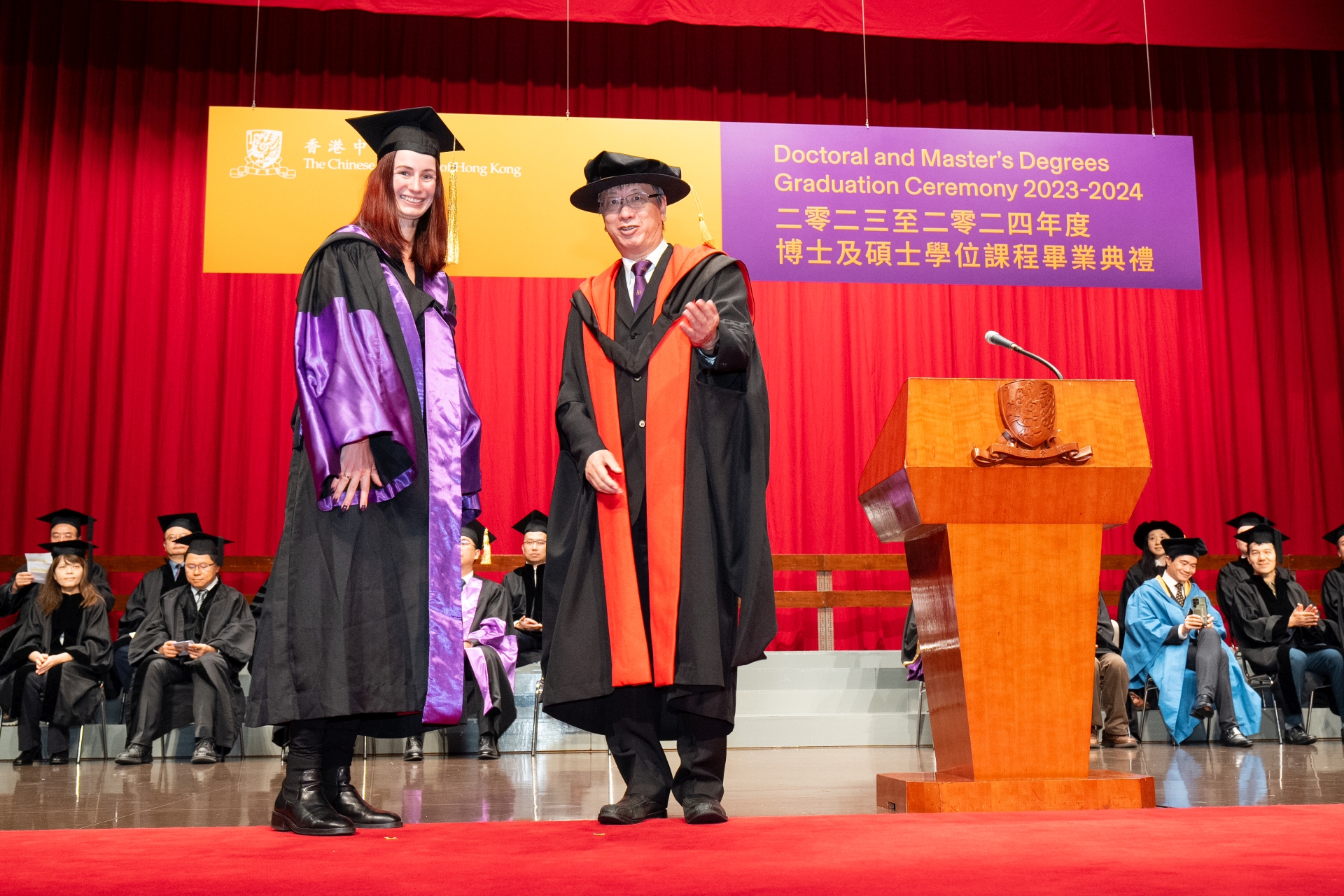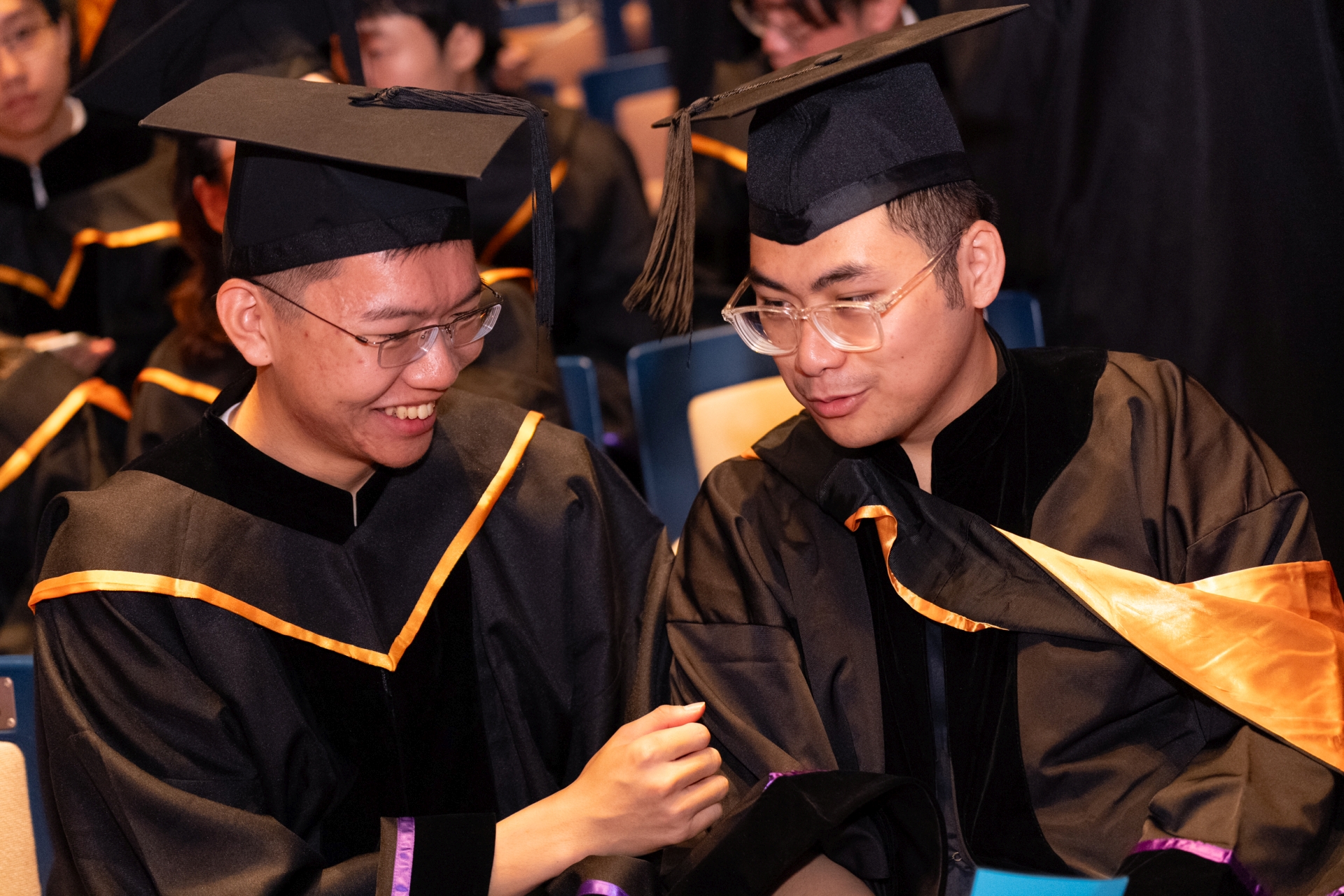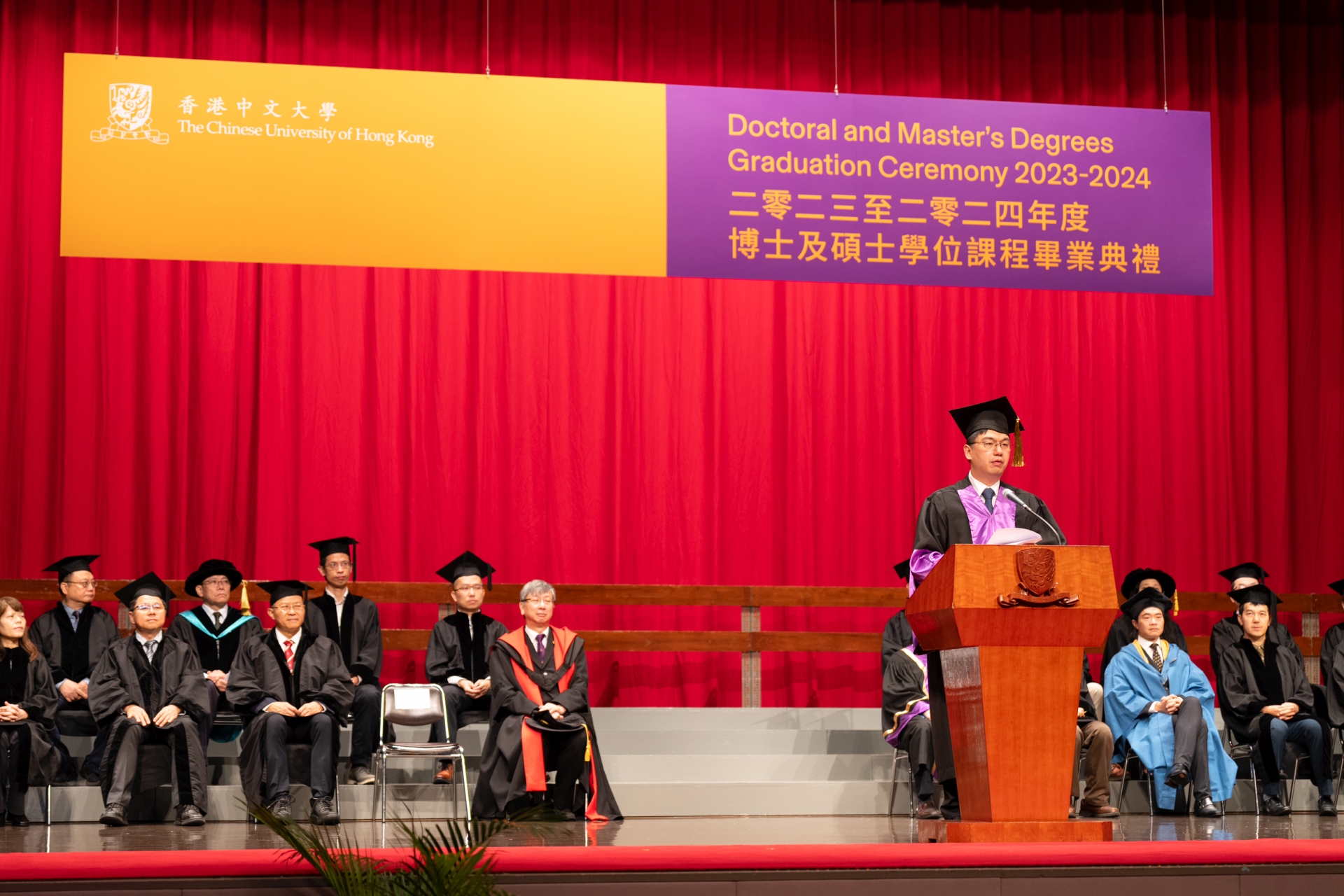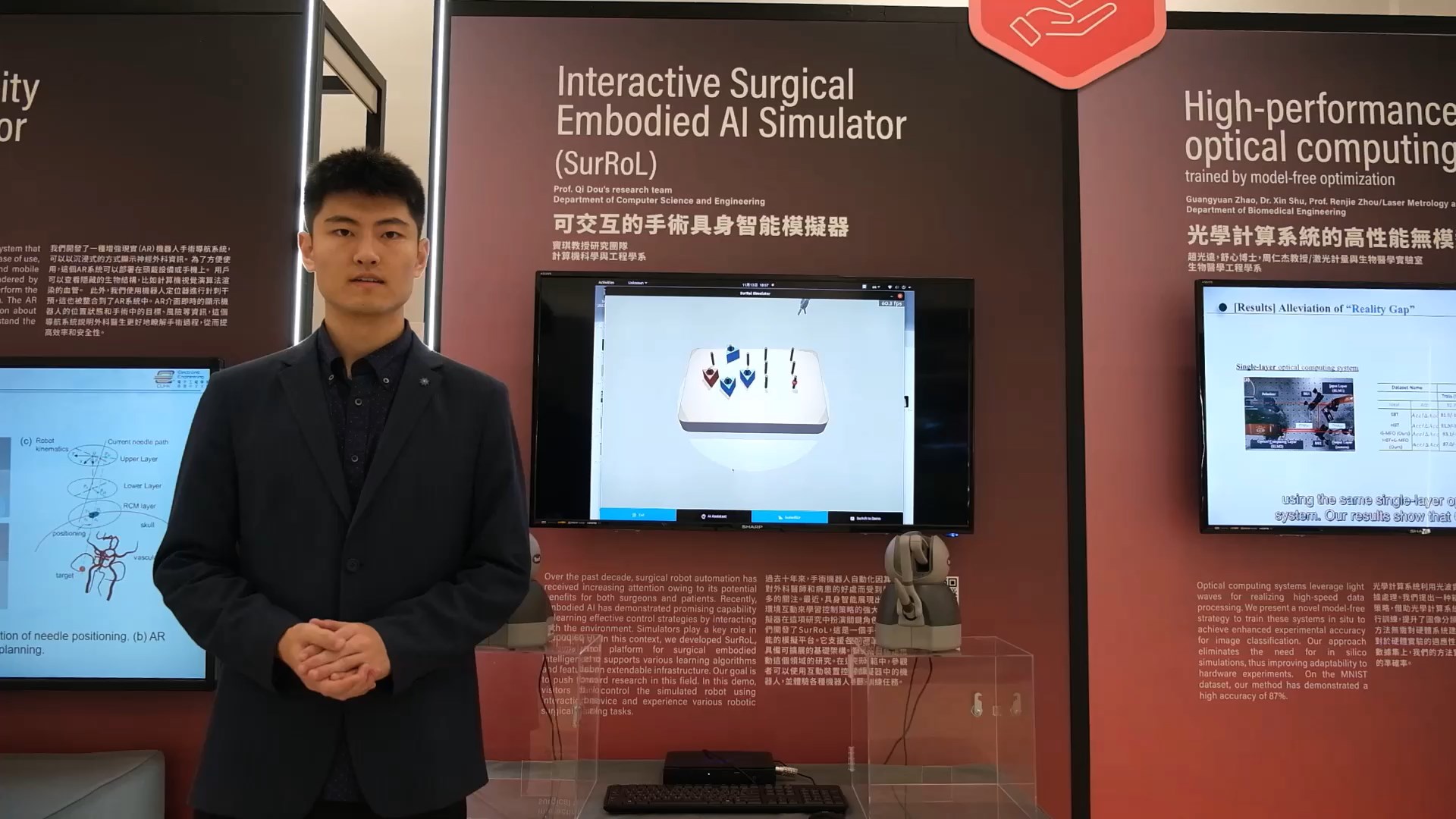The Chinese University of Hong Kong (CUHK)’s Engineering FinTech Applied Research (CEFAR) Academy and HSBC Software Development (Guangdong) Limited (HSDC), the bank’s global technology centre in mainland China, signed a Memorandum of Understanding (MOU) today (16 December). It aims to groom young talent and benefit the community, promoting their mutual interests while fostering cooperation and collaboration. The signing ceremony, attended by key representatives from both organisations, marks a significant strengthening of their relationship. According to the MOU, both parties will co-organise seminars, workshops and business forums, inviting experts to share industry insights. HSDC will provide career opportunities and an internship programme for CUHK’s Master of Science in FinTech students, enabling them to pursue fintech careers or undertake industrial projects in mainland China, particularly within the Greater Bay Area (GBA). Professor Tsang Hon-ki, Dean of Engineering of CUHK, expressed enthusiasm about the partnership and said: “This collaboration will significantly benefit our FinTech students, aligning with our mission to advance education and industry engagement. Our students will gain invaluable exposure to real-world industry practices through the internship programme and industrial projects. These opportunities will allow them to apply their academic knowledge in practical settings, enhancing their learning experience and preparing them for careers in the financial technology sector.” Mr Jim Ma, General Manager of HSDC, echoed these sentiments and said: “Our partnership with CEFAR, backed by the great business opportunities and technology ecosystem of the GBA and the rest of China, is a testament to our dedication to fostering innovation and development in the fintech industry. We also look forward to more young fintech talent joining us to accelerate the bank’s digitisation”.
|
|

